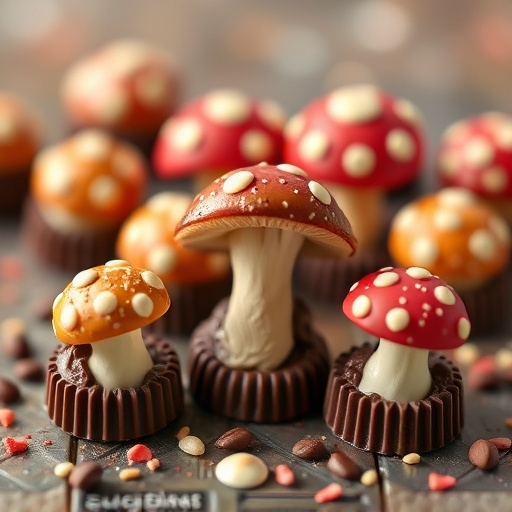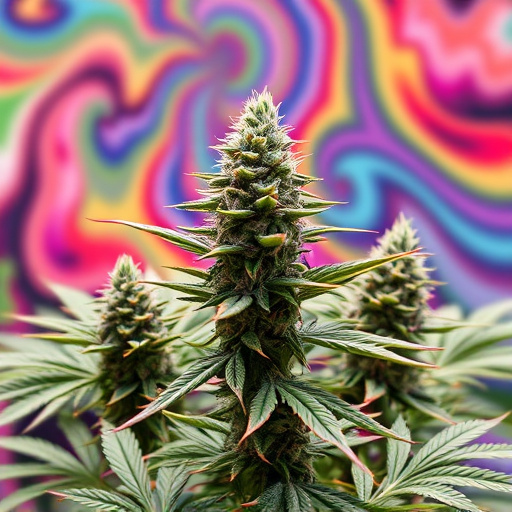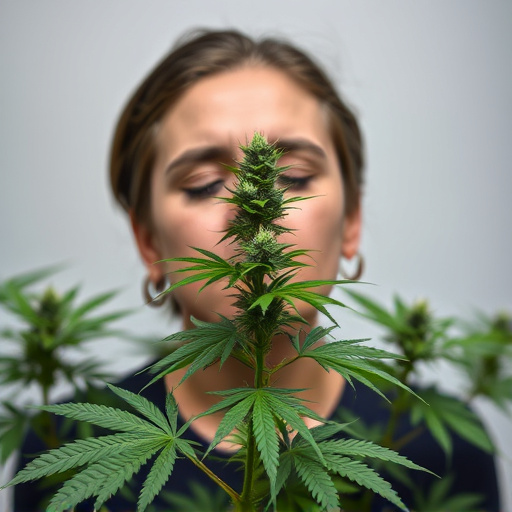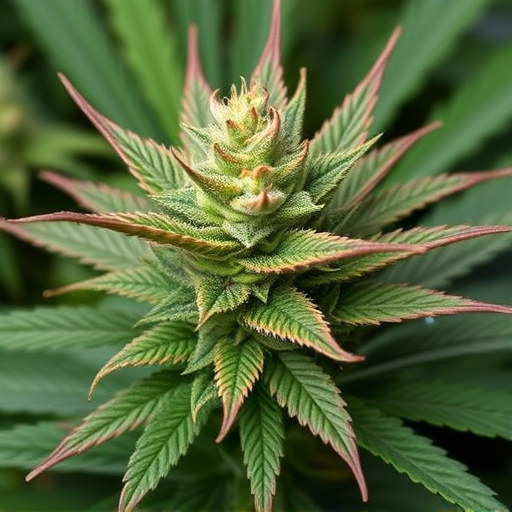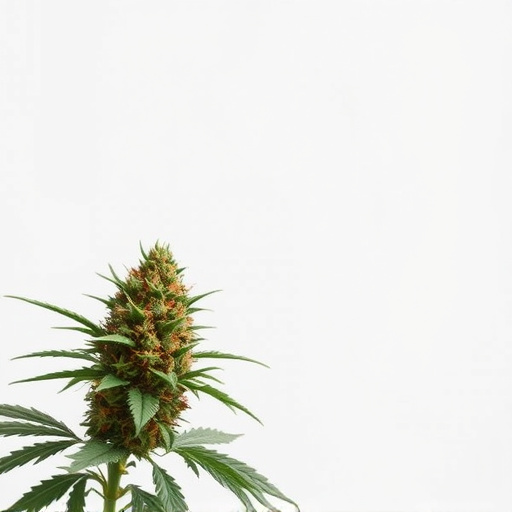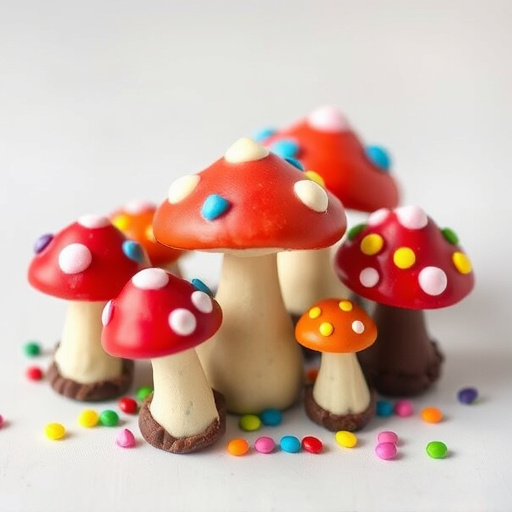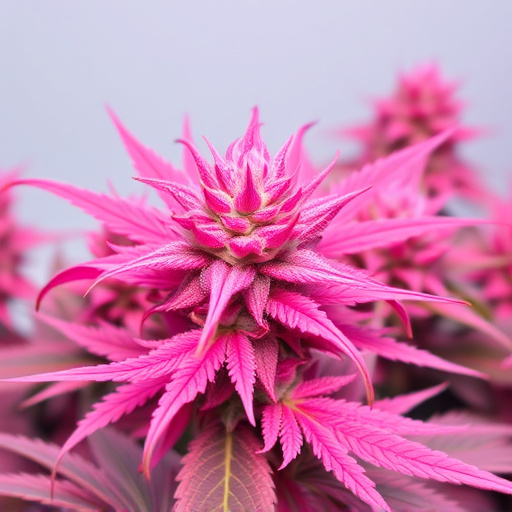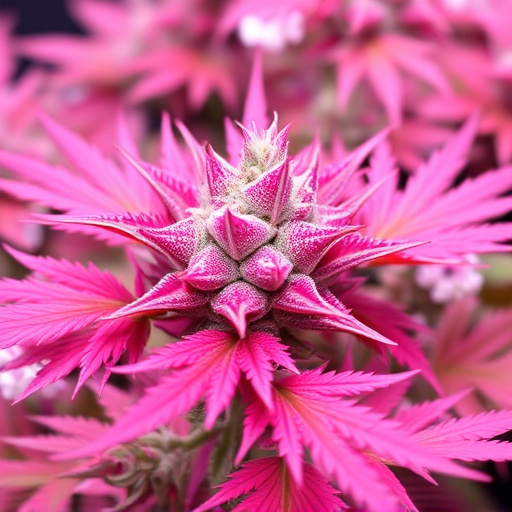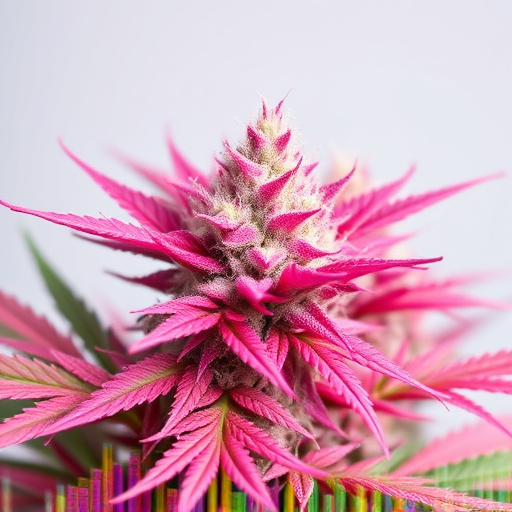Cultivating high-quality pink cannabis strains requires precise control of environmental conditions, including temperature, humidity, and soil composition. By optimizing these factors—such as using specific LED lighting for pigment enhancement and managing soil hydration levels—growers can achieve not only visually stunning plants but also enhanced cannabinoid profiles that contribute to unique sensory experiences and potential therapeutic benefits.
“Unraveling the intricate relationship between cannabis growth environments and the quality of highly sought-after pink cannabis strains is a game-changer for cultivators. This article explores how varying conditions, from light intensity to soil composition, can significantly impact the development and potency of these unique varieties. By delving into the science behind it, we’ll uncover the secrets to cultivating premium pink strains, ensuring their distinct aroma, flavor, and therapeutic benefits are preserved at every stage.”
- Understanding the Impact of Environment on Cannabis Growth
- The Role of Light and Temperature in Pink Cannabis Strains' Development
- Soil Conditions and Their Effect on Cannabinoid Production and Quality
Understanding the Impact of Environment on Cannabis Growth
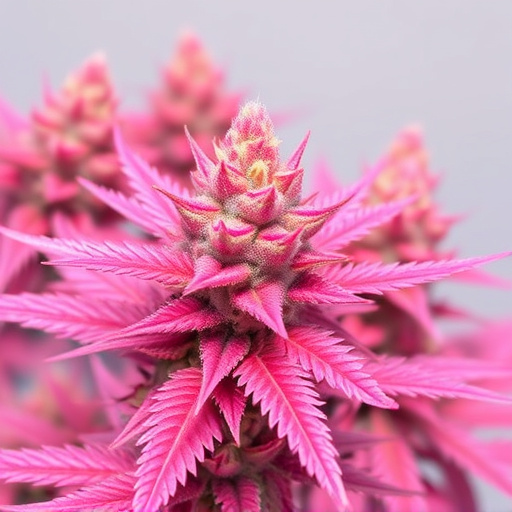
The environment plays a pivotal role in shaping the quality and characteristics of cannabis plants, including those prized pink cannabis strains. Beyond basic necessities like light, water, and nutrients, subtle environmental factors can significantly influence the flavor, aroma, and effects of the final product. For instance, variations in temperature, humidity, and soil composition can prompt different cannabinoid and terpene profiles, leading to distinct experiences for consumers.
Understanding these connections is crucial for cultivators aiming to produce premium cannabis. By meticulously controlling environmental conditions, such as maintaining optimal temperature ranges and humidity levels, and selecting suitable soil types, growers can guide the plants’ natural processes to unlock their full potential. This results in pink cannabis strains that not only present visually striking appearances but also deliver enhanced flavors, aromas, and therapeutic benefits.
The Role of Light and Temperature in Pink Cannabis Strains' Development
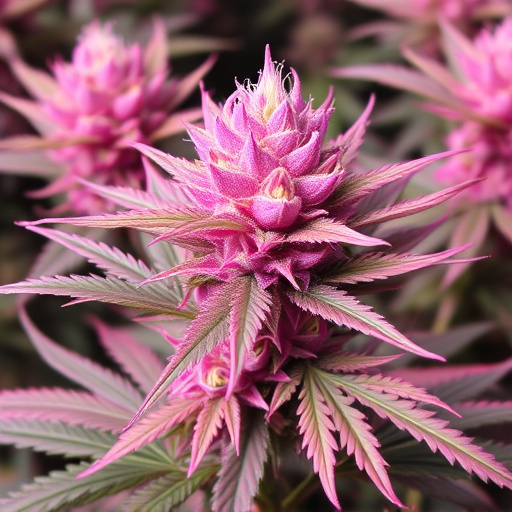
The development of pink cannabis strains is a delicate dance between light and temperature, two environmental factors that play a crucial role in their unique visual appeal and potential therapeutic benefits. These strains owe their distinctive hue to high levels of anthocyanin production, a pigment often associated with red and purple colors in plants. Optimizing light exposure is essential; pink strains typically thrive under specific lighting conditions, such as LED lights tailored to their needs, which can enhance anthocyanin synthesis.
Temperature regulation is another critical aspect. While cannabis plants generally tolerate a range of temperatures, pink strains may have slightly different requirements. Cooler nights and controlled temperature gradients can stimulate the production of these anthocyanins, resulting in richer, more vibrant shades. Understanding and manipulating light intensity and temperature during the growth cycle allows cultivators to produce pink cannabis strains with consistent quality, ensuring that each plant reaches its full potential, from lush green growth to stunning final product.
Soil Conditions and Their Effect on Cannabinoid Production and Quality
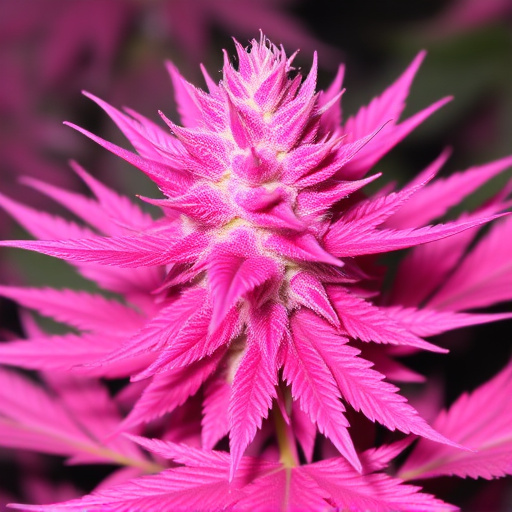
Soil conditions play a pivotal role in shaping the quality and cannabinoid profile of cannabis plants, including the coveted pink cannabis strains. The health and composition of the soil directly impact nutrient availability for the plants, influencing their growth and overall chemical makeup. Well-balanced soil with optimal pH levels, rich in organic matter, promotes robust plant development and often results in higher cannabinoid concentrations, particularly desired terpenes and flavonoids that contribute to the unique aroma and flavor profiles sought after by cannabis enthusiasts.
For pink cannabis strains, specific soil conditions can enhance their natural rosy hues and associated therapeutic properties. These strains, known for their delicate appearance and potential medicinal benefits, thrive in soils with adequate drainage but also retain moisture, ensuring roots receive sufficient nutrients without saturation. Proper management of soil hydration levels and incorporating beneficial microbes can significantly affect cannabinoid production, leading to more potent and desirable pink cannabis varieties.
In conclusion, the quality of pink cannabis strains is profoundly influenced by environmental factors such as light, temperature, and soil conditions. Understanding these impacts allows cultivators to optimize their growing practices, ensuring the production of premium-quality strains. By meticulously controlling these elements, from the spectrum and intensity of light to the pH and nutrient levels in the soil, growers can foster robust plants with enhanced cannabinoid profiles, ultimately delivering superior experiences for cannabis enthusiasts.
